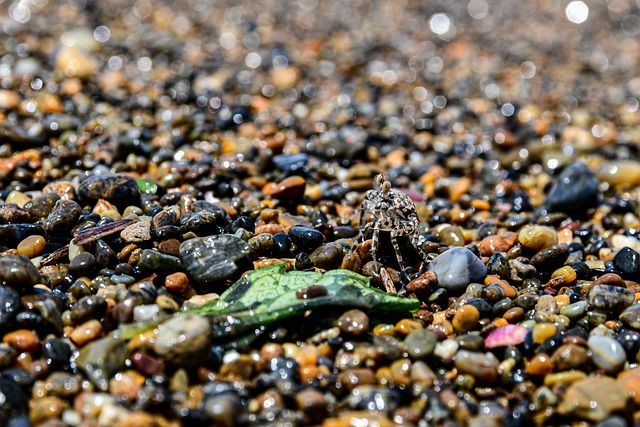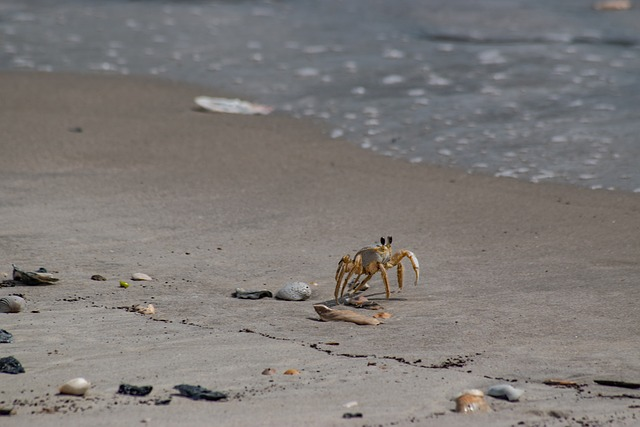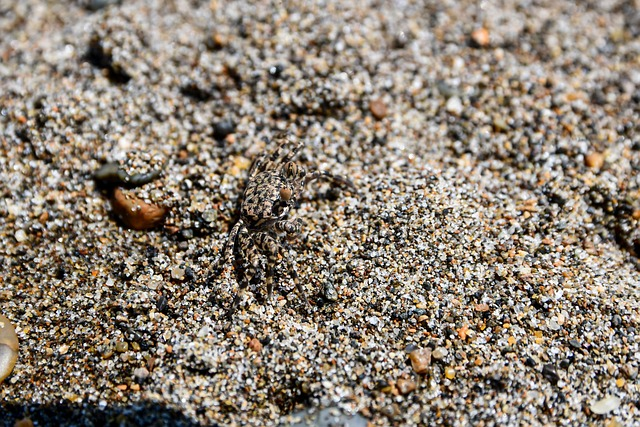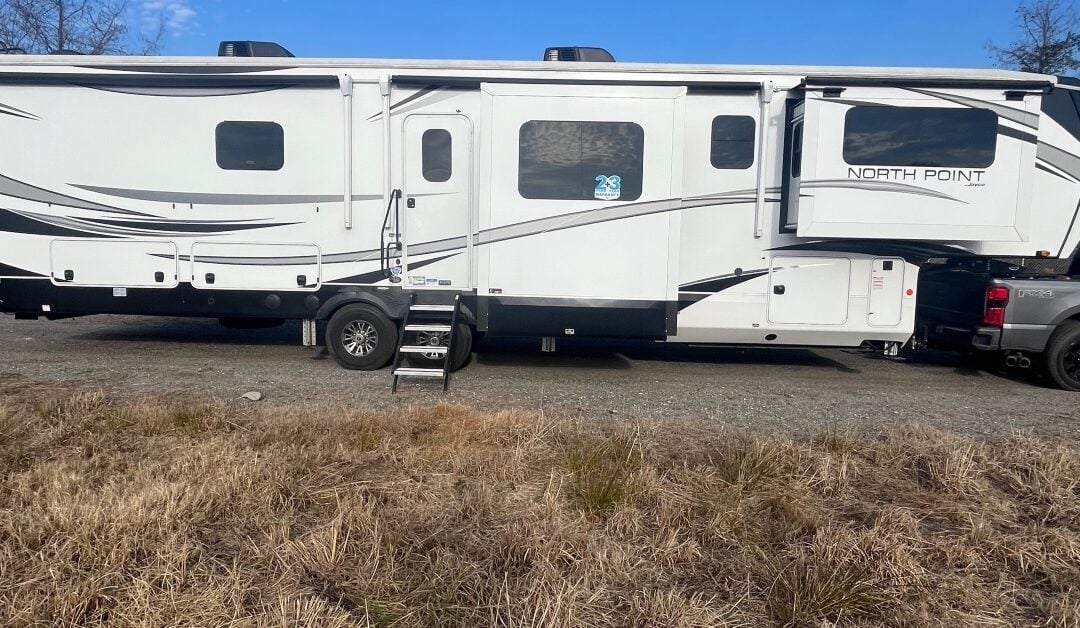While we might not often give them much thought, there is a whole new world to discover when it comes to the small but mighty ghost crabs that we might find scurrying around on beaches.
The ghost crab ocypode quadrata are fascinating creatures, also known as a sand crab. They have caught the attention of many biologists and ecologists over recent years, leading to a surge in research to understand more about these little crustaceans.
From their behaviour to their importance in maintaining coastal ecosystems, there is so much to learn about ghost crabs. So, let’s dive in and discover more about these mysterious and fascinating creatures.
Anatomy and Behaviour
Ghost crabs are typically found on damp sand beaches. You can find most ghost crabs in tropical and subtropical areas all around the world. They can range in size from just a few centimetres up to around 10cm.
One key feature that separates ghost crabs from other crab species is their large club shaped eyestalks, which when combined with their keen sense of smell and hearing, make them fearsome predators who are always on the lookout for food.
They are capable of moving extremely quickly thanks to their long walking legs, and they can also dig remarkably efficiently, which comes in handy as they spend much of their time burying themselves in the sand to stay cool or to hide from predators.
Using all aspects of their perception, ghost crabs communicate using a bubbling sound made by their legs rubbing together. They also using sounds to settle disputes, so there’s no need for physical contact.
Habitat and Distribution
Ghost crabs habitat regions of the coast worldwide, and they are particularly common on the sandy beaches of tropical and sub-tropical regions.
They are expert burrowers, and once they have found a suitable spot on the beach, they will start to dig a burrow that they can retreat to when they need to cool off, hide from predators, or simply relax.
While they can tolerate a wide range of temperatures and salinities, ghost crabs live and prefer slightly warmer waters and typically avoid rocky or pebbly beaches.
Reproduction
Ghost crabs have a unique reproductive system, which makes them different from other types of crustaceans. Unlike most crabs that lay their eggs in water and larvae hatch, ghost crabs lay their eggs on land when they reach sexual or reproductive maturity.
When females reach sexual maturity and mating occurs, they carry the fertilized eggs beneath their abdomen until they hatch, which takes several weeks. Male crabs will use their specialized claws to grasp onto the female’s carapace as they engage in a dance before mating.
This intricate and fascinating process of reproduction helps ghost crabs ensure the survival of their species in a constantly changing and challenging environment. Once the larvae hatch, they undergo a series of molts before reaching adulthood.
The life cycle of ghost crabs is an interesting journey that includes five different zoea stages. These stages are crucial for the growth and development of these creatures. Starting from the first crab stage known as the tiny larval stage, the ghost crabs go through a series of molts and transformations to reach their final adult form.
These stages are marked by the gradual development of their box like body. Each stage will bring changes to their legs, claws, and a widening of the carapace length. Each stage lasts only a few days, and during this time, the zoeae must fend for themselves while each crab stage takes place.
Despite the challenges they face, these tiny creatures are resilient and can adapt to different environments. Understanding the five zoea stages of ghost crabs is an important step in appreciating the rich diversity of marine life around us.
Diet and Predators
These small crabs are opportunistic feeders, and they will eat almost anything that they come across on the beach, such as insects, crustaceans, and even small fish and smaller crabs.
However, they are also hunted by many larger predators, including birds, fish, and even humans. As a result, they are constantly on alert, always keeping an eye out for potential threats and ready to make a quick escape if necessary.
Importance in Coastal Ecosystems
Ghost crabs play an important role in maintaining coastal ecosystems, as they help to keep the beach clean by eating dead or decaying matter, and they also act as an important source of food for many other species.
As they dig their burrows into the sand, they also help to aerate the soil, which can be beneficial for other species that live in the sand, such as microorganisms and other small invertebrates.
Where Can You Find Ghost Crabs?
If you’re looking for a spooky beach experience, look no further than the ghost crabs or otherwise called sand crabs! These crustaceans are well-named, with their white exoskeletons and quick movements giving them a ghostly appearance as they skitter across the sand.
While they can be found in coastal areas all over the world, some of the best places to see them include Myrtle Beach, Florida, the Caribbean, and South America.
In addition to being interesting to watch, ghost crabs are also an important part of the beach ecosystem, playing a role in breaking down organic matter and providing food for other animals.

The Fascinating World of the Atlantic Ghost Crab
Have you ever heard of Atlantic ghost crabs? These small, burrowing crabs are fascinating creatures that inhabit sandy beaches, dunes, and tidal flats along the eastern coast of the United States, from Massachusetts to Brazil.
Despite their ghostly white appearance and nocturnal habits, these crabs are a crucial part of the coastal ecosystem and play an important role in keeping the beach clean.
Adaptations of the Atlantic Ghost Crab
Atlantic ghost crabs are equipped with a range of adaptations that help them survive in their sandy habitat. Their pale coloration provides camouflage against the beach sand, and their flattened bodies allow them to move quickly and smoothly through the sand.
They also have specialized eyes that allow them to see both above and below the water, making them excellent predators. When they feel threatened, they can quickly burrow into the sand, disappearing from sight within seconds.
Behavior and Habits of the Atlantic Ghost Crab
Atlantic ghost crabs are primarily nocturnal and spend their days hiding in their burrows, which can extend over three feet deep. At dusk, they emerge from their burrows to forage for food, which consists of small invertebrates and dead plant and animal matter.
They are also known to scavenge for food left behind by beachgoers, such as hot dog buns and other trash. Atlantic ghost crabs can move up to three feet per second and have been known to jump as high as six inches to avoid predators.
The Role of the Atlantic Ghost Crab in the Ecosystem
Atlantic ghost crabs are an important part of the coastal ecosystem, as they help to break down dead plant and animal matter and prevent the buildup of debris on the beach.
Their burrowing activity also serves to aerate the soil and create habitats for other organisms, such as mole crabs and sand dollars.
Additionally, they serve as prey for other coastal animals, such as gulls and sea turtles.
Threats to Atlantic Ghost Crabs
Despite their important role in the ecosystem, Atlantic ghost crabs face a number of threats. Coastal development and erosion can destroy their habitat and disrupt their burrowing activity. Pollution, such as oil spills and plastic debris, can also harm these crabs and their prey.
Beachgoers can inadvertently step on or disturb their burrows, causing stress and injury to the crabs. It’s important for humans to be mindful of these small but crucial creatures and respect their role in the coastal ecosystem.
How to Observe Atlantic Ghost Crabs
If you’re interested in observing Atlantic ghost crabs, the best time to look for them is at dusk or dawn, when they are most active. Head to a sandy beach with a flashlight and look for small, white crabs darting across the sand.
Be sure to observe them from a distance and avoid disturbing their burrows. With a little patience and respect for these fascinating creatures, you can gain a deeper appreciation for the delicate balance of the coastal ecosystem.

The Secrets to Finding Ghost Crabs
Few things are more relaxing than a day at the beach, where you can soak up the sun, feel the sand beneath your toes and listen to the sound of the crashing waves.
These elusive little creatures can be found darting around on the beach after the sun sets, making for a thrilling and memorable experience.
Spot the Right Time of Day
Ghost crabs are nocturnal creatures, which means they only come out at night. When the sun sets and the beachgoers head home, ghost crabs start to scurry about.
So, if you want to catch them, you’ll need to visit the beach after dark. It’s best to go just after sunset, while there’s still some light. But make sure to bring a flashlight, too!
Look in the Right Places
Ghost crabs are usually found near the waterline, where they forage for food. Look for them on the wet sand near the tide line, where they are most active.
You might also spot them in the dunes or near the beach vegetation.
Be Patient and Calm
Ghost crabs are easily spooked, so approaching them too quickly can scare them away.
Approach them slowly and quietly, and avoid casting too much light on them. They will be more likely to stay put if they don’t feel threatened.
Observe Them From a Distance
Ghost crabs are fascinating creatures and watching them is a great opportunity to learn more about their behavior.
You can watch them catch their prey, move their claws and dig burrows in the sand. But remember, they’re best observed from a safe distance for both you and the crabs themselves.
Release Them Carefully
If you catch a ghost crab, be gentle and release it back into the wild. Don’t keep them in a container or touch them too much.
These creatures are important members of the coastal ecosystem and it’s important to treat them with respect.

Conclusion
Although ghost crabs might not be the most famous or well-known of marine creatures, they are nevertheless fascinating and important species that play a vital role in maintaining coastal ecosystems around the world.
From their impressive speed and agility to their distinctive appearance and burrowing behaviour, there are plenty of reasons to be intrigued by these little crustaceans.
So, the next time you’re in Myrtle Beach, take a moment to look out for these little creatures and appreciate all that they do to help keep our oceans healthy and thriving.
Cozy Turtle RV Rentals
If you’re planning your next Myrtle Beach vacation, why not switch up your accommodations and rent an RV with Cozy Turtle? This unique option allows you to combine the best of camping and beach living, all while having the comforts of home.
With RVs available in various sizes, you’ll find the perfect fit for your family or group. Plus, you won’t have to worry about any strict checkout times, as your RV is your home for the duration of your stay.
Enjoy the freedom to explore the area and create unforgettable memories with those closest to you in your very own Cozy Turtle RV. While you’re at it, go check out the swift footed ghost crabs you can find almost anywhere in Myrtle Beach!

















